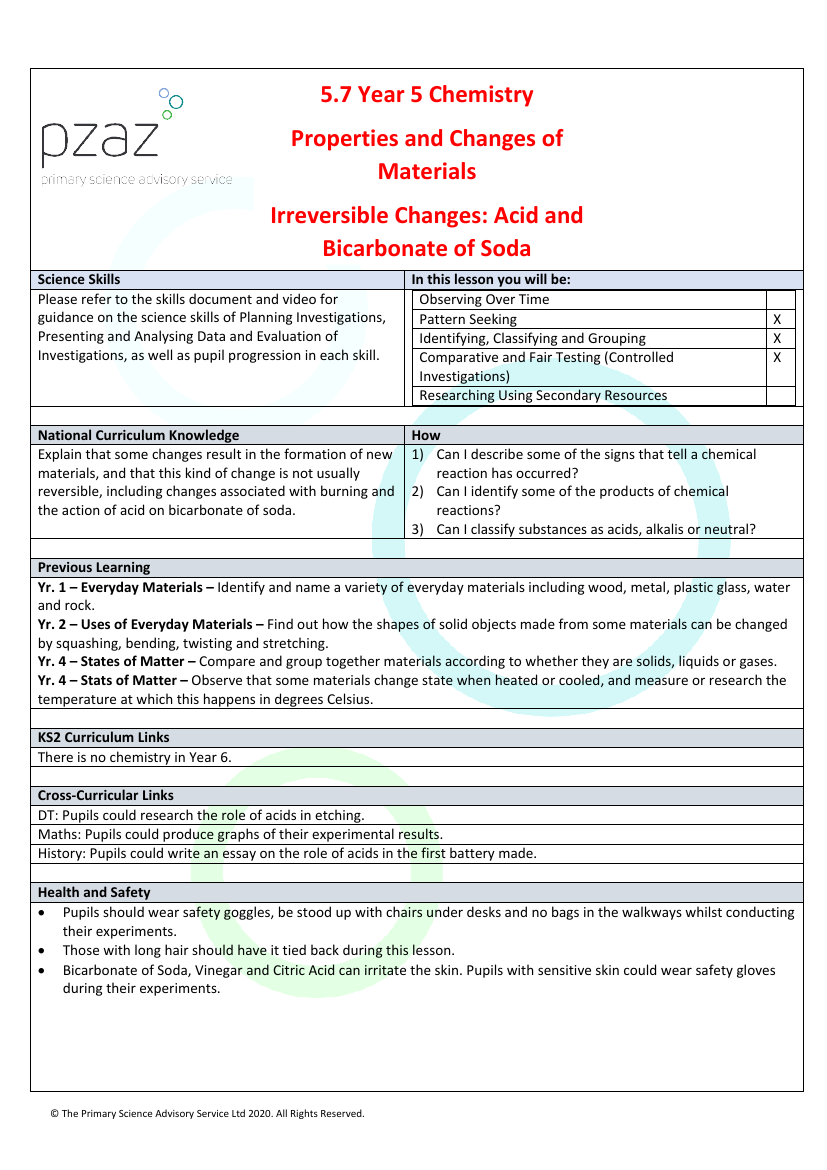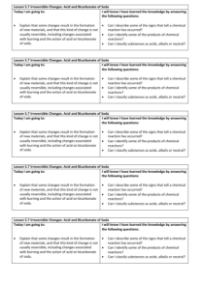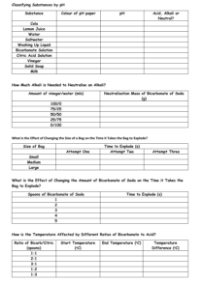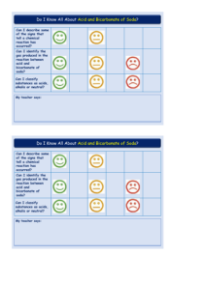Acid and Bicarbonate of Soda - Lesson Plan

Science Resource Description
This comprehensive lesson plan from The Primary Science Advisory Service Ltd is aimed at enhancing students' understanding of irreversible changes, particularly the reaction between acid and bicarbonate of soda. The lesson aligns with the National Curriculum, teaching students that some chemical changes result in the formation of new materials and are not usually reversible, such as the reaction of acid with bicarbonate of soda. Students will delve into the signs of a chemical reaction, identify the products formed, and classify substances according to their pH levels as acids, alkalis, or neutral. This lesson builds upon previous years' knowledge of materials and their properties, including changes in state and the malleability of solids.
The lesson includes practical activities where students will use pH indicator paper to test various substances, such as cola, lemon juice, and vinegar, and classify them as acids, alkalis, or neutral. They will also experiment with neutralising acids by adding bicarbonate of soda to vinegar and observing the change in pH. Health and safety considerations are paramount, with students required to wear safety goggles, tie back long hair, and potentially use gloves for sensitive skin. The lesson addresses common misconceptions, such as the corrosiveness of acids compared to alkalis and the meaning of pH levels. Keywords such as 'irreversible', 'neutralisation', and 'carbon dioxide' are introduced, and the contributions of influential scientists like Soren Sorensen and Humphrey Davy are acknowledged. The activities are designed to be engaging and hands-on, providing a memorable learning experience that links chemistry with cross-curricular subjects such as Design Technology, Maths, and History.





